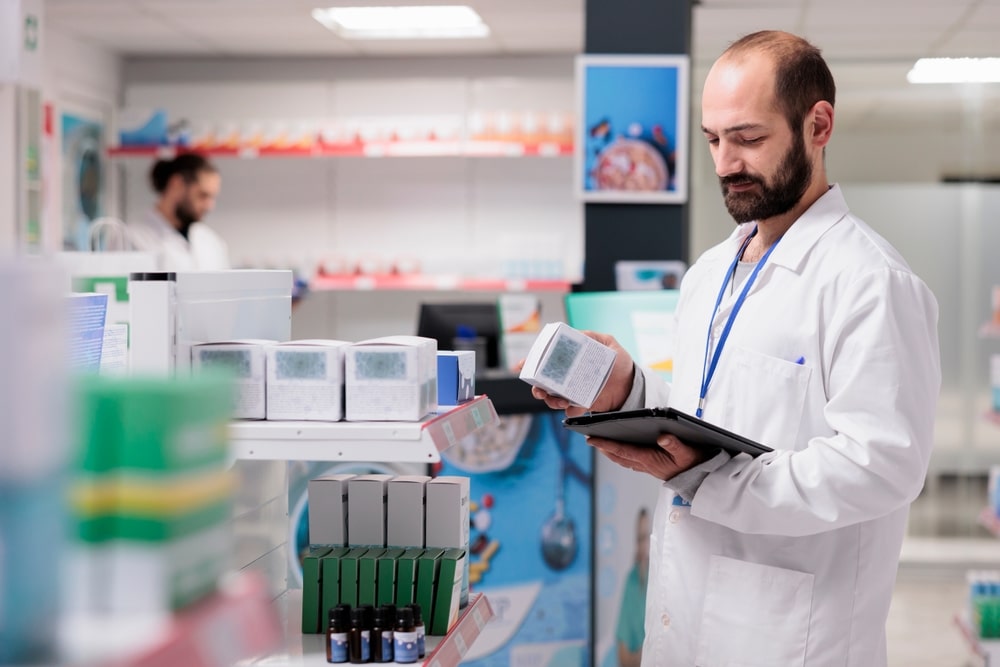Albert Nguyen and the founder of Affordable Health Services PLLC (est. 2014). Trained at the University of Oklahoma with dual MD/PhD degrees and residency at Beth Israel Deaconess Medical Center, Dr. Nguyen pairs rigorous neurobiology research experience (Alzheimer’s and HIV) with frontline clinical practice. His clinic delivers equitable, patient-centered care with a strong emphasis on medication safety, preventive medicine, and coordinated treatment plans. Certified in BLS, ACLS, and ATLS, Dr. Nguyen is trusted for ethical decision-making, nondiscriminatory access to care, and meticulous medication management that reduces errors and improves outcomes.
Medication reconciliation is a structured process that helps primary care physicians prevent prescribing errors and keep treatment plans accurate. It means verifying, clarifying, and documenting a patient’s medication list. Making this step routine reduces the chance of omissions or duplications that might cause harm. It offers patients a clear safety baseline and greater confidence in their care.
Patients deserve accurate information about the drugs they are taking, including risks and potential interactions. When physicians invite them to review their lists, patients can ask questions, flag side effects, or request adjustments. It blends clinical evidence with the patient’s own experience, involving them in decisions.
Confidentiality is equally central. Medication histories often include sensitive details, such as prescriptions tied to mental health or infectious disease. Physicians must follow the Health Insurance Portability and Accountability Act (HIPAA) “minimum necessary” rule, a privacy standard restricting unnecessary data sharing. In rare cases, such as suspected abuse or public health threats, HIPAA allows carefully limited disclosures. Beyond privacy, reconciliation also follows structured steps that keep the process consistent.
The workflow starts with a complete list from the patient, checked against pharmacy records and specialist notes, then corrected for discrepancies. Electronic health records flag interactions, import pharmacy data, and store updates. When the same standardized steps run across the practice, patients receive uniform safeguards no matter which provider handles the review. Standardizing this process strengthens role clarity and ensures documentation remains reliable across all providers.
The risks of skipping reconciliation show up most clearly during care transitions, when patients move between hospitals, clinics, or specialists. At those points, lists may contain duplicate prescriptions, overlooked allergies, or conflicting instructions. Treating reconciliation as optional leaves safety gaps at the moments when coordination matters most. Studies show nearly every patient who experiences a care transition faces at least one unintended medication change, underscoring why reconciliation is critical at these points.
For patients with chronic conditions, reconciliation is vital to stability. People managing diabetes, hypertension, or asthma often juggle complex regimens from several clinicians. Outdated or overlapping prescriptions reduce effectiveness and increase risk without a regular review. Keeping medication lists accurate helps coordinate long-term plans and supports adherence to prescribed regimens.
Primary care also serves as the coordinating hub when multiple clinicians prescribe for the same patient. Reconciliation allows the physician to spot conflicts early and contact other providers to adjust therapy. This oversight role keeps treatment plans aligned rather than splintering across specialties.
The process also reflects professional integrity. When discrepancies appear, physicians explain them directly and document corrections clearly. If mistakes occur, physicians acknowledge them and outline next steps to reinforce accountability. Transparent communication about medication risks forms the foundation of adequate care.
Medication reconciliation is not static but part of ongoing professional development. Physicians keep current with new therapies, dosing guidelines, and interaction data. Training covers tools such as reconciliation alerts and pharmacy data imports, and staff apply best practices in daily work. Staying updated ensures that care remains consistent with recognized patient safety standards.
In practice, medication reconciliation shows how ethics and safety converge. It safeguards autonomy by informing patients, protects confidentiality through secure handling, and upholds integrity by transparent communication. It also connects directly to international safety efforts such as the WHO’s Medication Without Harm campaign, serving as a durable safeguard that strengthens protection at every encounter.

